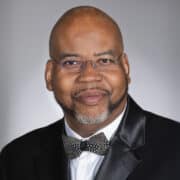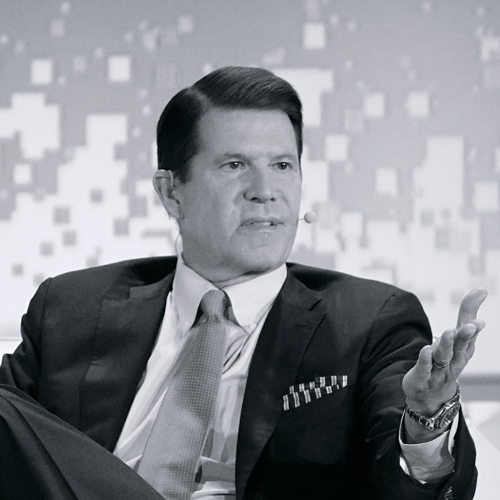It’s one of the largest automobile glass producers in the world. Up until 2014, though, Fuyao Glass Industry Group Company LTD had nearly all of its manufacturing facilities located in China. But during the 2008/2009 economic downturn, many domestic glass manufacturers in the United States either closed or stopped reinvesting in their businesses, and Fuyao Glass recognized an opportunity to establish its presence.
So, in 2014, the company bought two sites: an existing 1.3 million-square-foot float glass plant in Mt. Zion, Illinois, as well as a 1.4 million-square-foot former General Motors assembly plant just outside of Dayton, Ohio, that was closed in 2008 by GM. Fuyao immediately started installing new state of the art production equipment at that plant, and mass production began in late 2015. Part of that production is bending, shaping, and assembling output from the Illinois plant before it is sent to automobile manufacturers.

Fuyao Glass America, Inc.
Steve Schrader, the company’s chief financial officer, has played a key role in establishing Fuyao’s US presence, which includes business lines in lamination glass (for OEM windshields), tempering glass that safely shatters into small pieces on impact for most of the rest of the vehicle, encapsulation (glass sealed with rubber-like sunroofs), and replacement windshields.
“Launching manufacturing from scratch in a new country is a challenge,” Schrader says. “That’s true even for Fuyao, which already has experience and expertise to understand cost issues down to the smallest production line details.”
The company’s US operations are replicating finely-tuned production processes already in place in China that will ultimately make the Dayton site the largest auto glass plant in the world. To support those efforts, Schrader views his role as encompassing two different realms.
The first is monitoring and guiding financial strategy. During the pre-production phases, that included comparing actual costs to forecasts for capital projects, operating and administrative expenses, and payroll and hiring costs. He also developed tax, auditing, banking and insurance needs, and established relationships with external partners. Additionally, Schrader was solely responsible for cash management, including ensuring compliance with Chinese government restrictions on the amounts that could be sent as part of the internal financing that covered substantial portions of the subsidiary’s cash needs.
The second portion of Schrader’s role extended beyond typical financial considerations. His team assessed key daily production data—output, quality, and equipment downtime levels on all shifts and production lines—against overall objectives. Then, they analyzed any discrepancies and helped develop solutions to address them.
“We’ll eventually have twenty-four production lines running around the clock,” Schrader explains. “That creates a tremendous amount of data related to costs, but that same data has to be leveraged to come up with practical solutions and improvements.”
That’s made possible, in part, because Fuyao focuses on highly detailed reporting and monthly meetings with upper management to review key performance indicators. Schrader says attention goes beyond the overviews that most executive teams expect to examine specifics at the invoice level for accounts payable and receivables.
Read more of Profile’s Top 50 articles.
And that detailed analysis paid off. The company had its first monthly profit eighteen months after mass production began. “Hitting those numbers so early says a lot about the company,” Schrader says. “Fuyao knows exactly what’s required to deliver a high-quality final product, so we were benchmarking our efforts against their established Chinese factories, which set the bar very high.”
In addition to Fuyao’s leadership taking notice of that success, so too are Schrader’s peers, including Larry Keyler, managing partner of RSM Detroit. He says Schrader has been a visionary for Fuyao and has the ability to anticipate issues, which has allowed for proactive and impactful solutions.
“In addition, his keen understanding of the business processes and technologies has provided a platform for optimal production efficiencies,” Keyler says. “Leveraging these skills, knowledge, and understanding into the financial strategy and reporting process has positioned the company for a solid foundation for future growth and success.”
One challenge that came as a surprise, though, was completing the hiring process. In the United States, Fuyao had about eight hundred employees at the end of 2015 but needed an additional 1,200 in 2016 for newly awarded OEM programs. A low unemployment rate in the region, especially for manufacturing jobs, made that difficult. The company realized it had to act more aggressively, Schrader says, so it increased salaries for production employees by 15 percent.
“The employment situation stabilized after we reached two thousand employees and, in 2017, turnover and absenteeism went down substantially,” he says. “That allowed us to be more consistent on production output, yield, and equipment availability.”
As the company moves closer to 24/7 production, Schrader says that full staffing may reach three thousand, which will facilitate even greater efficiency and productivity.

Addressing cultural differences has been another aspect of establishing Fuyao in the United States. It’s not surprising that merging American and Asian perspectives took some getting used to, but there were also elements of company culture that had to be taken into consideration. For example, some staff members who were Chinese and came to work in the United States—who Schrader describes as Fuyao’s best and brightest—have been with the company for decades and have precise ways that they expect objectives to be accomplished.
“When we started, my staff was almost all Chinese,” Schrader says. “That presented me with a tremendous learning experience.”
Schrader was also able to find common ground through his belief that numbers tell a story that is usually crafted to address the specific concerns of particular audiences. Combining that perspective with the company’s detailed reporting practices helped him to create a holistic and comprehensive context to explain the particular elements that contributed to various results and what follow-up steps should be taken to support or correct them.
“Whether you speak English or Chinese, numbers are a universal language,” Schrader says. “They helped create a bridge between us and made it easier to feel that we’re all on the same team and working together to reach the same goals.”
Photos: Craig Wilson















